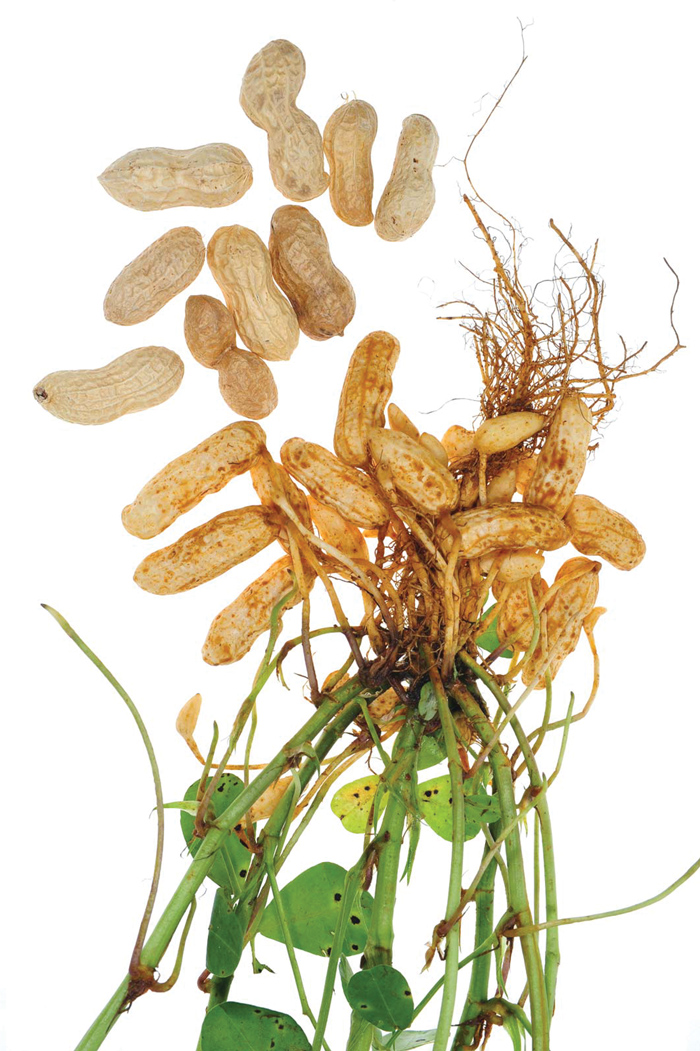October 2021
| PIETMAN BOTHA, INDEPENDENT AGRI- CULTURAL CONSULTANT |
 |
Groundnuts is a high value crop where the yield and quality of the yield must be protected at all costs. It is also a crop that can produce its own nitrogen if the seed is inoculated with the correct inoculant.
Weed and pests will lead to lower yields and will use moisture and nutrients in the soil that will cost producers money. Good groundnut yields start with correct soil preparation and a good seedbed. This means the soil is cultivated to combat weeds and to incorporate crop residues and chemicals to create a favourable seedbed for the seeds to germinate. Make sure that the cultivation applied will break up soil constrains like subsoil compaction and plough pans.
 The seedbed must be without weeds. It must also be level so that the planter can plant the seeds at the desired depth. It must not contain clots as this will have a negative effect on the plant population and plant spacing. Make sure that plants are spaced properly and don’t choke each other as they grow and develop. All other production mistakes can in a certain way be corrected but if there is a problem with the plant population it cannot be corrected without replanting the crop.
The seedbed must be without weeds. It must also be level so that the planter can plant the seeds at the desired depth. It must not contain clots as this will have a negative effect on the plant population and plant spacing. Make sure that plants are spaced properly and don’t choke each other as they grow and develop. All other production mistakes can in a certain way be corrected but if there is a problem with the plant population it cannot be corrected without replanting the crop.
The cultivar that producers can plant, is determined by the buyers of the product. Each groundnut producer has a cultivar that is specified for his final product. Producers must negotiate with the buyers of the groundnuts for the best cultivar and the best price. Normally there will be a before season contract between the producer and buyer.
GROUNDNUT SEED TREATMENT
Before planting, the seed needs to be treated with a bacterial legume inoculant for the effective nitrogen fixation like MBFI Rizo-liq groundnut seed treatment. It is important to mix the inoculant according to the recommendations of the suppliers but more important is to keep the mixed seed out of direct sunlight. Do not store the mixed seed too long before planting. Read and study the labels and follow these recommendations.
This seed also needs to be treated to prevent damping-off. A product like Celest can be used. It is important to contact a herbicide representative to help with the products needed and application rates. Form a partnership with the chemical representative to help manage this high value crop.
GET THE MOST OUT OF YOUR CROP
The control of grasses in groundnuts is very important. Use a product with a S-metolachlor active ingredient like Metagan Gold with plant.
Broadleaf weeds can also be controlled with herbicide. Products like Broadstrike or Strongarm can be used. These herbicides may be sprayed with the grass control herbicide just after planting before the weeds emerge.
The control of cutworm is also very important. Use a product with Lamda-cyhalothtin ingredient like Karate EC for control.
Groundnuts must grow for at least 130 days. If it is possible to extend the growth period to 150 days or longer it will have a major impact on the yield. To extend the growth of the groundnuts it is important to control any fungal diseases like leaf spot and rust. There are various pesticides available to contain these fungal diseases. Contact your chemical representative to help identify the fungal disease and to recommend the best control mechanism.
Producers must also be on the look out for bollworms as these worms destroy the plant’s factory and have a major impact on the yield.
In order to expand the yield, apply foliar nutrition according to the leaf analysis.
Publication: October 2021
Section: Pula/Imvula